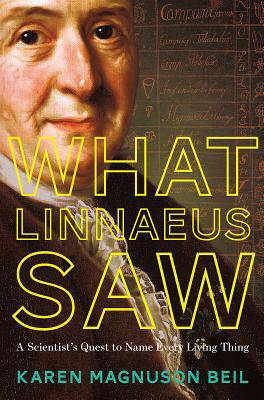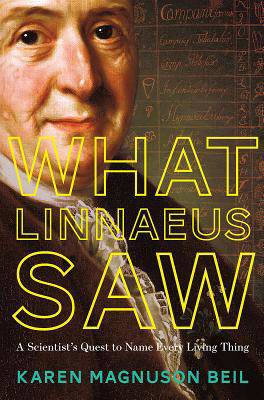
- Afhalen na 1 uur in een winkel met voorraad
- Gratis thuislevering in België vanaf € 30
- Ruim aanbod met 7 miljoen producten
- Afhalen na 1 uur in een winkel met voorraad
- Gratis thuislevering in België vanaf € 30
- Ruim aanbod met 7 miljoen producten
Zoeken
What Linnaeus Saw
A Scientist's Quest to Name Every Living Thing
Karen Magnuson Beil
Hardcover | Engels
€ 30,45
+ 60 punten
Omschrijving
In What Linnaeus Saw, Karen Magnuson Beil chronicles Linnaeus's life and career in readable, relatable prose. As a boy, Linnaeus hated school and had little interest in taking up the religious profession his family had chosen. Though he struggled through Latin and theology classes, Linnaeus was an avid student of the natural world and explored the school's gardens and woods, transfixed by the properties of different plants. At twenty-five, on a solo expedition to the Scandinavian Mountains, Linnaeus documented and described dozens of new species. As a medical student in Holland, he moved among leading scientific thinkers and had access to the best collections of plants and animals in Europe. What Linnaeus found was a world with no consistent system for describing and naming living things--a situation he methodically set about changing. The Linnaean system for classifying plants and animals, developed and refined over the course of his life, is the foundation of modern scientific taxonomy, and inspired and guided generations of scientists.
What Linnaeus Saw is rich with biographical anecdotes--from his attempt to identify a mysterious animal given him by the king to successfully growing a rare and exotic banana plant in Amsterdam to debunking stories of dragons and phoenixes. Thoroughly researched and generously illustrated, it offers a vivid and insightful glimpse into the life of one of modern science's founding thinkers.
Specificaties
Betrokkenen
- Auteur(s):
- Uitgeverij:
Inhoud
- Aantal bladzijden:
- 256
- Taal:
- Engels
Eigenschappen
- Productcode (EAN):
- 9781324004684
- Verschijningsdatum:
- 1/10/2019
- Uitvoering:
- Hardcover
- Formaat:
- Genaaid
- Afmetingen:
- 157 mm x 231 mm
- Gewicht:
- 635 g

Alleen bij Standaard Boekhandel
+ 60 punten op je klantenkaart van Standaard Boekhandel
Beoordelingen
We publiceren alleen reviews die voldoen aan de voorwaarden voor reviews. Bekijk onze voorwaarden voor reviews.











